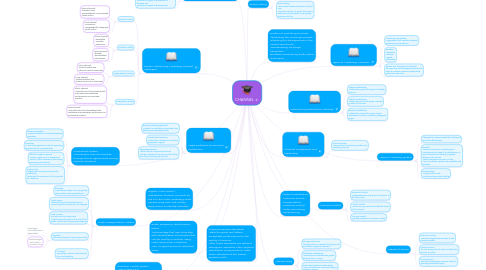CHANNEL
by Vanessa Tan


1. Channels using marketing intermediaries
1.1. -producer to wholesaler to retailer to consumer -producer to wholesaler to business user -producer to agent to wholesaler to retailer to consumer -producer to agent to wholesaler to business user -producer to agent to business user
2. Contractual System -coordinates channel activities through formal agreements among channel members
2.1. Retail Cooperative -retailers establish a shared wholesaling operation
2.2. Franchise -a franchisee agrees to meet the operating requirements of a manufacturer
2.3. Effective logistics requires -proper supply chain management -control of the activities of purchasing, processing and delivery
2.4. Supply chain -begins with raw materials inputs for production -ends with the movement of final product to customers -
3. Major Transportation Modes
3.1. Railroads -most efficient ways for moving bulky commodities over long distances
3.2. Motor carries -relatively fast and consistent service -receives greater revenue per ton shipped -
3.3. Water carriers -include inland or barge lines -freight rates are based on the size of the vessel, cost of fuel and security measures
3.4. Pipelines -efficiently transports natural gas and oil
3.4.1. Advantages -low maintenance -dependable
3.4.2. Disadvantages -few location -relatively slow
3.5. Air freight -Declining in certain market sectors -firms are adapting
4. Inventory Control system -Just in time (JIT) -RFID techonolgy -Vendor managed inventory (VMI)
5. Radio Frequency Identification (RFID) -techonology that use a tiny ship with identification information that can be read by a scanner using radio waves from a distance -use to grant access to restricted areas
6. Logistic Cost Control -distribution function accounts for half of a firm total marketing costs -reexamining each link of their suply chains to identify activities
7. Customer-service standards -state the goals and define acceptable performance for the quality of services -after these standards are defined, desingners assemble other physical distribution components to meet these standards at the lowest possible costs
8. Factors influencing Marketing Channel Startegies
8.1. Markets Factors
8.1.1. Short Channels -business users -geographically concentrated -large orders
8.1.2. Long channel -Consumers -geographically dispersed -small orders
8.2. Products Factors
8.2.1. Short channel -perishable -complex -expensive
8.2.2. Long Channles -durable -standardized -inexpensive
8.3. Organizational Factors
8.3.1. Short channel -broad product line -channel control important
8.3.2. Long channel -limited product line channel control not important
8.4. Competitive factors
8.4.1. Short Channel -manufacturer feels satisfied with marketing intermediaries performance in promoting product -
8.4.2. Long channel -manufacturer feels dissatisfied with marketing intermediaries performance in promoting product
